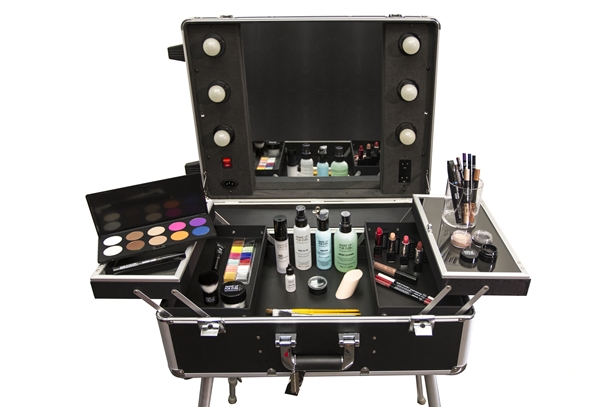A Makeup Artist/Stylist: Don’t Leave for a Shoot Without One
(with one tiny weeny exception)
By: Anne Schwab
Writer | Producer | Director | Styling Consultant
As part of a national depression-awareness campaign, a major health organization brought in a production company to develop a series of PSAs. Two stylists from Creative Management Services were also booked to design the character makeup and wardrobe needed to give the two actors that tired, unhealthy and depressed look.
Knowing how important the use of makeup is to the overall look of a production, we proudly set up our makeup boards and hung the wardrobe. However, before we could begin the makeup application, the producer said she wanted the talent on the set for a lighting test. The camerawoman fiddled with the lights then took one look through the lens and exclaimed, “Perfect. The makeup’s perfect.”
Why without makeup do we look naturally and perfectly tired, unhealthy and maybe even depressed on camera?
–The lights for film and video are strong. Strong lights often penetrate the thin, outer layer of skin through to the dermis. The dermal layer contains arteries (reddish) and veins (bluish) and when the light reflects through this layer, the skin appears blotchy and discolored often with deep under eye circles.
–Lighting also reflects highlights on the surface of the skin. So, if an actor’s skin is shiny, the lights could bounce back a beam to the camera bright enough to be seen by the International Space Station. Not cool.
–No one has perfect skin. Blemishes, large pores, rosacea, acne, scaring or eczema may need correction as well.
–Makeup for film and video is heavier. Not transparent like over-the-counter makeup products. The opaque foundations and powders prevent the light from traveling through the top layer of skin.
–The texture of the foundation—when applied correctly—gives an even canvas and a natural appearance.
–Create special effects. Foundation, blush and eye colors can create special effects. The artist is not limited to the actor’s own coloration and is at liberty to choose a palette that works better with the character and the overall look of the production.
Moral to the story: never, ever shoot footage of a human face without makeup unless you are attempting to recreate scenes from the Great Depression!
